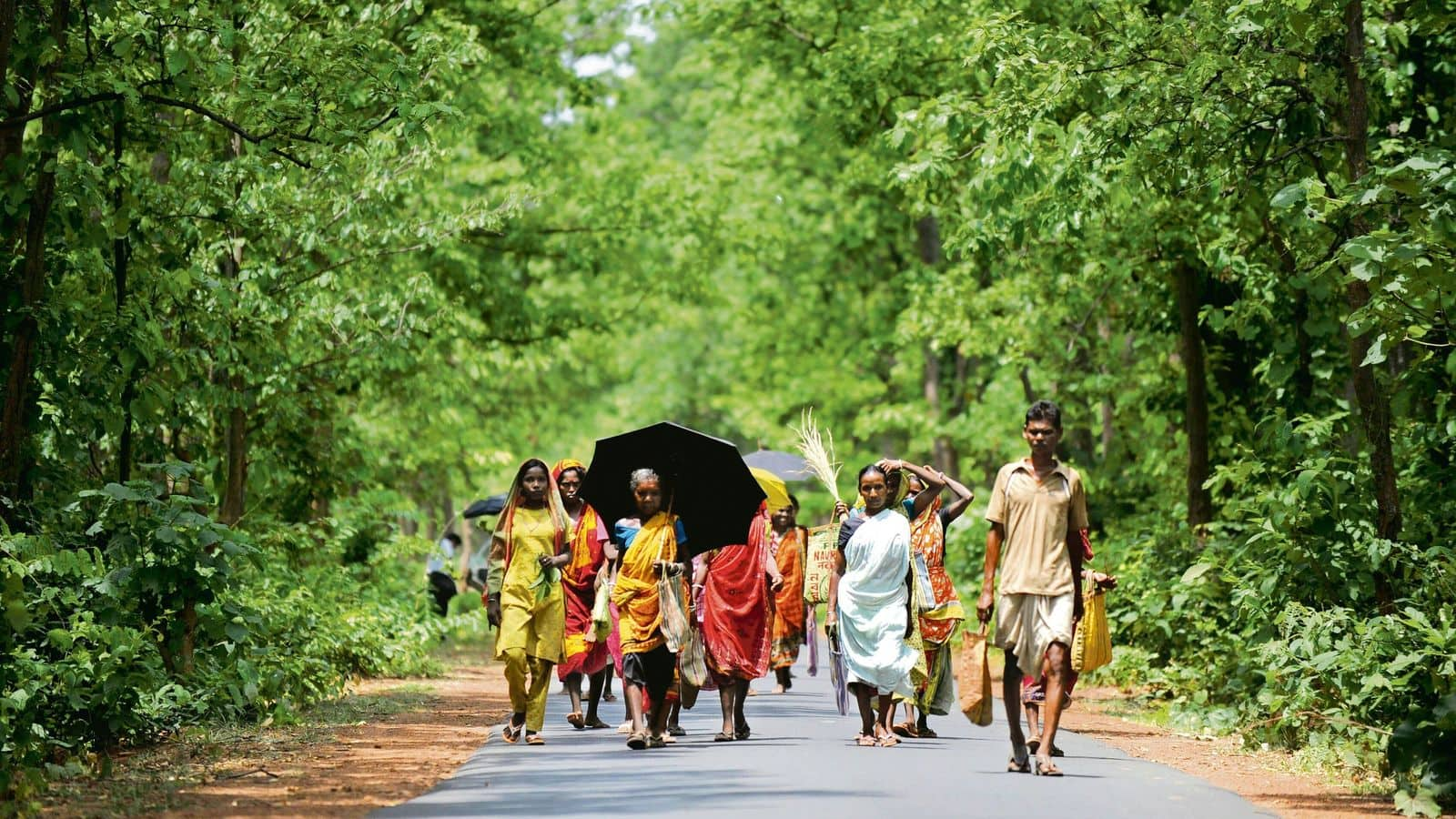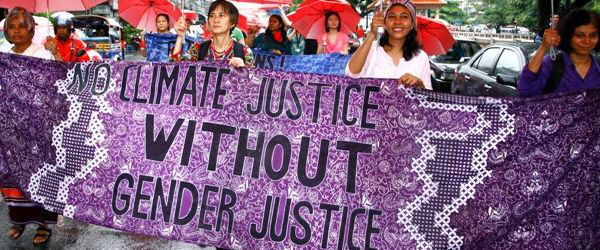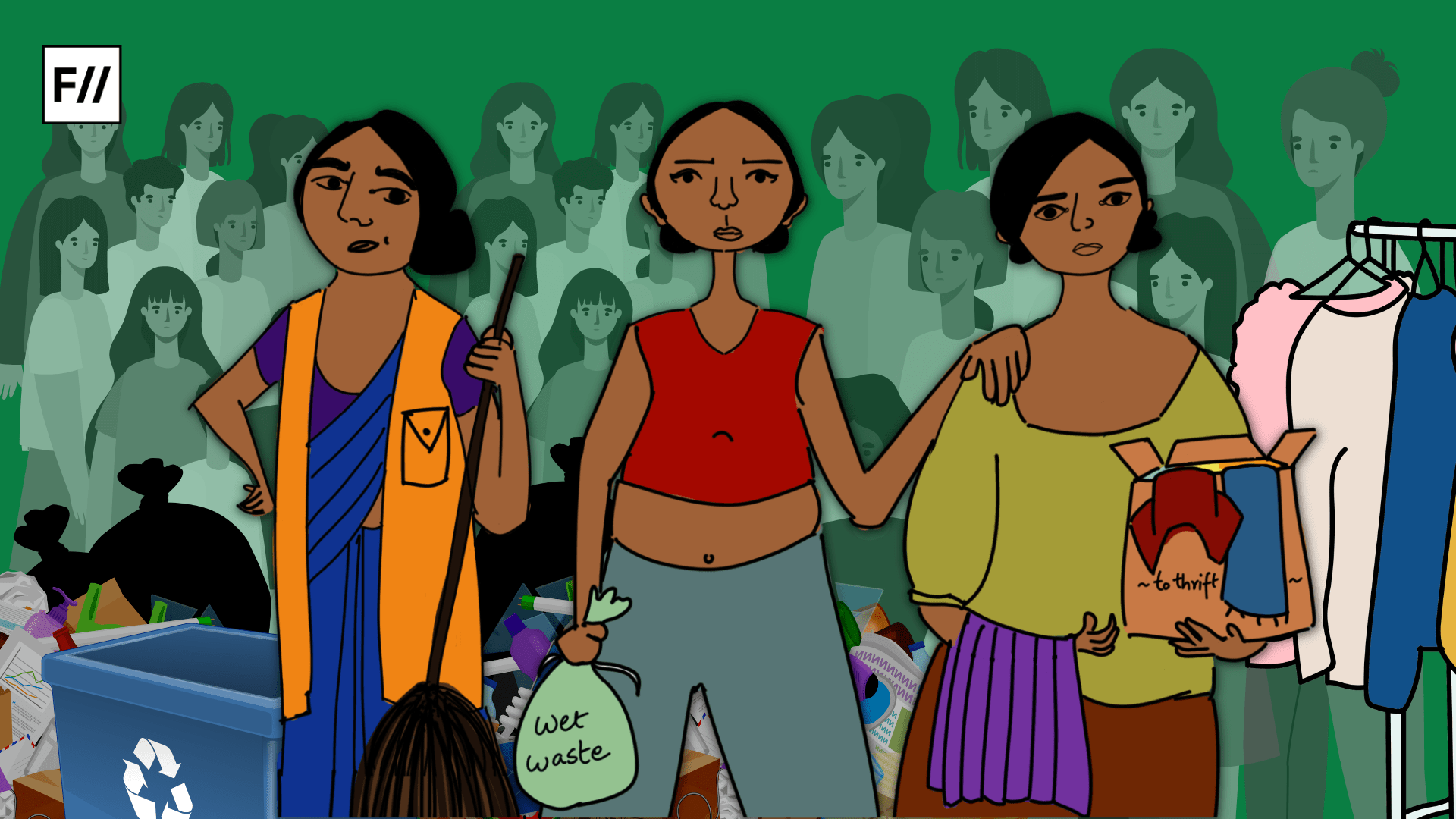As climate change continues to wreak havoc globally, the role and importance of women in the climate change policy-making arena remain grossly neglected. Women, especially from marginalised communities in developing countries, face the maximum perils of climate change, with little to no remedy from the concerned authorities.
In 2010, UNDP stated that “women are vulnerable not because of natural weakness (i.e. their sex), but rather because of socially and culturally constructed roles (i.e. their gender)”. Given the gender inequality, especially in the developing countries, the imminent climate change would result in worsening the patterns of gender disparity due to various factors, some of them being access to resources, dependence on natural resources for sustenance, sexual division of manual labour, lack of education and proper access to information, limited control over mobility, and unequal roles in decision making at domestic and apex level.
Women and environment: Gender roles and environmental crisis
In Mexico, along the Pacific Coast in Coyuca de Benitez, untimely tropical storms and tidal surges have wreaked havoc over the past decade. Multiple cyclones have left 70 percent of the city damaged, with several thousand houses dilapidated and the drinking water infrastructure totally disarrayed. A state of emergency was experienced in the city in 2017.
When mass resettlement was underway to shield the citizens from further danger from the cyclones, most women refused to leave their native place to move to a safer abode. They identified themselves as the primary caregivers, self-proclaiming themselves as solely responsible for tending to their elderly, kids, and disabled relatives.
Their emotional attachment forbade them to abandon the place. This discrimination emanates from the societal conditioning that identifies women as the primary domestic worker and the inherent expectation to secure others first, over their own security.
The narrative that women and vegetation (Nature, food, forests, and so on) are more closely interrelated since they both give life to their offspring and are driven by their function to ‘nurture’ must go away. Traditionally, women are kept primarily aloof from the political, social, and economic realms of life
Also read: The Need To Acknowledge The Inter-Relationship Between Environment Crisis And Reproductive Rights

Closer home in Mumbai, it is the Adivasi women at the forefront to save the Aarey forest from mass deforestation. Aarey forests are predominantly inhabited by the Warli Adivasi community. The forest and the community enjoy a symbiotic relationship, nurturing each other. Again, given generational gender disparity, women are embroiled in an immense contribution (exploitation?) in the matters of forest preservation, as they are engaged in extensive manual labour.
Forests cannot grow by themselves. Indigenous communities, especially the women—due to unequal division of labour— manually segregate the weed, thus, helping in maintaining the due nourishment of the trees. Blind afforestation, as assured by the authorities, therefore, is not a wise option.
This way, trivialising the contribution of marginalised communities, especially women, throws light on how they are disproportionately kept aloof in major urban planning projects. Several women from the Warli Community, as well as activists, have raised their voices against unjust policies, at the risk of being arrested or harassed in the course of their fight for justice.

Need for gender-sensitive policies and gender mainstreaming
These factors call for a gendered approach to climate change, not only in theory but also in practice. This can be undertaken in a two-fold strategy: first, by challenging and changing the patriarchal concepts of seeing women first and foremost as the caregivers; and secondly, by taking a top-down approach to bring fundamental changes in the governing institutions.
Policymakers must give due legal property rights to women which they can avail themselves of, for instance, during resettlement programmes. A technological disaggregated data collection and mapping of marginalised communities and gender profiles of informal settlements would come in handy while drafting policies
The narrative that women and vegetation (Nature, food, forests, and so on) are more closely interrelated since they both give life to their offspring and are driven by their function to ‘nurture’ must go away. Traditionally, women are kept primarily aloof from the political, social, and economic realms of life.
Further, lack of proper education keeps women deprived of a better understanding of worldly institutions; with their existence confined to domestic responsibility. This deprivation refrains them from gaining fundamental economic rights, ownership of property and inheritance of land, benefits in the workplace, and many more opportunities relating to livelihood.

From a top-down approach, gendered, climate-resilient urban planning is essential for a greener future. This would pave the way for ‘Gender Mainstreaming’, which is necessary to acknowledge women not only as victims but also as important decision-makers. Taking due cognisance of the nexus of climate change and gender, the UN’s Economic and Social Economic Council (ECOSOC) held gender mainstreaming as a very important facet of inclusive urban development.
By gender mainstreaming, institutions can gauge the implications of any planned action including legislation and policy programmes in all fields, and analyse how different genders are exposed to vulnerabilities.
Also read: Consumerism, Environmental Degradation, And Their Disproportionate Effects On Women
Policymakers must give due legal property rights to women which they can avail themselves of, for instance, during resettlement programmes. A technological disaggregated data collection and mapping of marginalised communities and gender profiles of informal settlements would come in handy while drafting policies.
Several evidence-based studies have proved how women are the most prone to climate change risks and have lesser options to overcome the catastrophe. Therefore to assuage women’s suffering, their due representation at top-level governing institutions to plan and implement inclusive policies is imperative.
At a more humane level, the foremost need is to be gender inclusive. Enough of deifying women (Mother Nature, Mother Earth, ‘Shakti’ and so on) and also trivialising their abilities (thinking us to be suitable only for domestic and caregiving roles). Gender equality and inclusivity are prerequisites to a sustainable and greener future.
Sucheta Chaurasia is a keen storyteller and researcher with a journalistic aptitude. She uses her words and camera to document stories related to gender, media, culture, climate change, and literature. She sincerely believes that a little hope and empathy can change the world for the better. Sucheta is on Instagram and LinkedIn
Featured Image Source: Ritika Banerjee for Feminism In India




